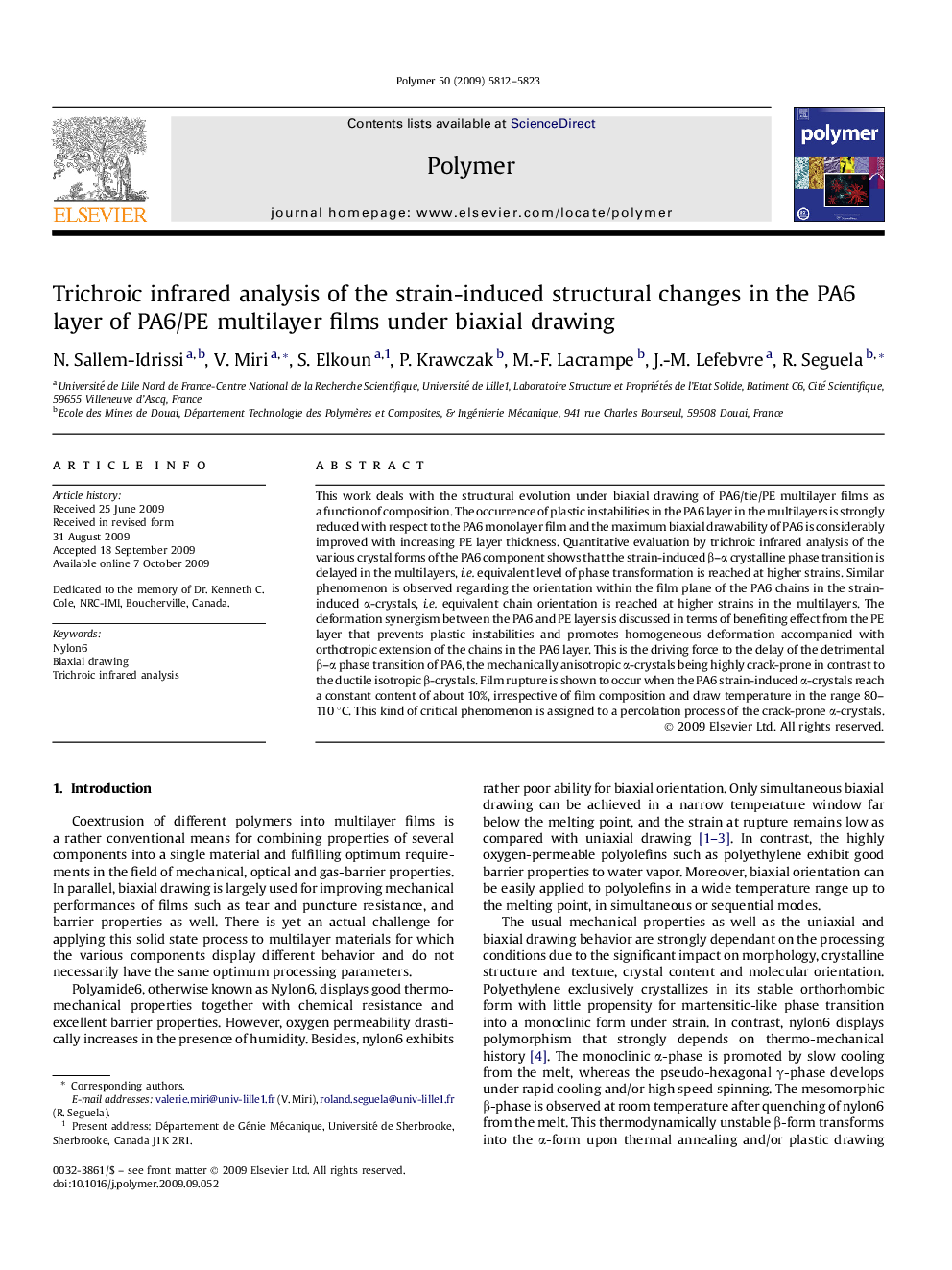| Article ID | Journal | Published Year | Pages | File Type |
|---|---|---|---|---|
| 5185676 | Polymer | 2009 | 12 Pages |
This work deals with the structural evolution under biaxial drawing of PA6/tie/PE multilayer films as a function of composition. The occurrence of plastic instabilities in the PA6 layer in the multilayers is strongly reduced with respect to the PA6 monolayer film and the maximum biaxial drawability of PA6 is considerably improved with increasing PE layer thickness. Quantitative evaluation by trichroic infrared analysis of the various crystal forms of the PA6 component shows that the strain-induced β-α crystalline phase transition is delayed in the multilayers, i.e. equivalent level of phase transformation is reached at higher strains. Similar phenomenon is observed regarding the orientation within the film plane of the PA6 chains in the strain-induced α-crystals, i.e. equivalent chain orientation is reached at higher strains in the multilayers. The deformation synergism between the PA6 and PE layers is discussed in terms of benefiting effect from the PE layer that prevents plastic instabilities and promotes homogeneous deformation accompanied with orthotropic extension of the chains in the PA6 layer. This is the driving force to the delay of the detrimental β-α phase transition of PA6, the mechanically anisotropic α-crystals being highly crack-prone in contrast to the ductile isotropic β-crystals. Film rupture is shown to occur when the PA6 strain-induced α-crystals reach a constant content of about 10%, irrespective of film composition and draw temperature in the range 80-110 °C. This kind of critical phenomenon is assigned to a percolation process of the crack-prone α-crystals.
Graphical abstractDownload full-size image
